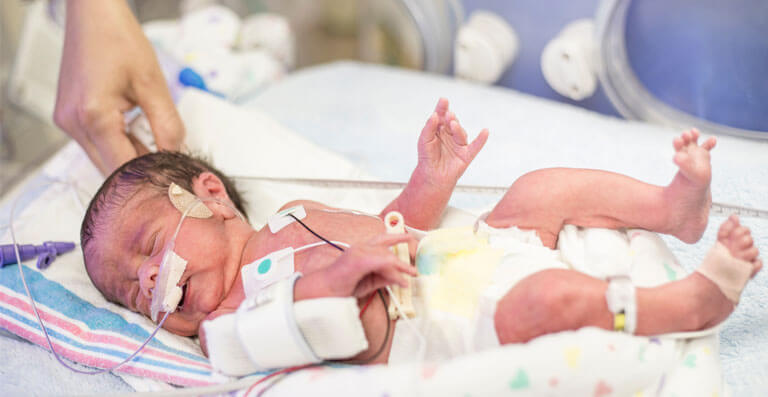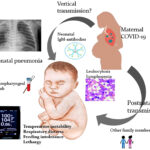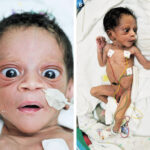Neonatal Seizure: Neonatal seizures are defined as abnormal, excessive electrical discharges in the brain of a newborn occurring within the first 28 days of life. Unlike seizures in older children or adults, neonatal seizures often present subtly and can be challenging to detect. Early recognition and management are critical due to their association with underlying neurological conditions and potential long-term developmental outcomes.

Classification of Neonatal Seizure
Neonatal seizures are generally classified based on their clinical and electrographic characteristics:
1. Subtle Seizures
These are the most common type in neonates. Manifestations may include:
- Eye deviation or blinking
- Oral movements (e.g., chewing, lip smacking)
- Apnea or changes in respiratory patterns
- Pedaling or rowing movements
2. Clonic Seizures
Characterized by rhythmic jerking movements, either:
- Focal: Affecting one limb or side of the body
- Multifocal: Involving different areas alternately
3. Tonic Seizures
Marked by sustained muscle contraction, which may be:
- Focal tonic: Involving one limb or body part
- Generalized tonic: Often associated with severe brain injury
4. Myoclonic Seizures
Brief, lightning-fast muscle jerks, which can be focal, multifocal, or generalized. These are often associated with metabolic disorders and poor prognosis.
Causes and Risk Factors
Neonatal seizures are symptomatic and secondary to underlying conditions. Major etiological categories include:
| Cause | Examples |
|---|---|
| Hypoxic-Ischemic Encephalopathy (HIE) | Most common cause in term infants |
| Intracranial Hemorrhage | Intraventricular, subarachnoid, or subdural bleeds |
| CNS Infections | Meningitis, encephalitis, TORCH infections |
| Metabolic Disturbances | Hypoglycemia, hypocalcemia, hypomagnesemia, hyponatremia |
| Congenital Brain Malformations | Lissencephaly, schizencephaly |
| Genetic Epilepsies | KCNQ2-related epilepsies, Ohtahara syndrome |
| Inborn Errors of Metabolism | Urea cycle defects, mitochondrial disorders |
| Drug Withdrawal or Toxicity | Maternal substance use, antibiotic toxicity |
Diagnostic Approach
A thorough and prompt diagnostic process is crucial for identifying the cause and initiating timely treatment.
Initial Evaluation
- Detailed Perinatal History: Includes birth asphyxia, maternal infections, or drug exposure
- Physical Examination: Neurological tone, reflexes, cranial size
Laboratory Tests
- Blood glucose, calcium, magnesium, electrolytes
- Sepsis screen and cultures
- Metabolic panel (ammonia, lactate, tandem mass spectrometry if IEM suspected)
Neuroimaging
- Cranial Ultrasound: Bedside assessment in unstable neonates
- MRI Brain: Preferred imaging modality for structural and hypoxic injuries
Electroencephalography (EEG)
Continuous video EEG is the gold standard for confirming electrographic seizures, especially when clinical signs are subtle or absent.
Lumbar Puncture
Recommended if CNS infection is suspected, following stabilization of the newborn.
Treatment and Management
Acute Seizure Management
- First-Line Therapy: Intravenous Phenobarbital (loading dose: 20 mg/kg, up to 40 mg/kg)
- Second-Line Options:
- Phenytoin
- Levetiracetam (increasingly preferred for its neuroprotective profile)
- Midazolam or Lidocaine infusions for refractory cases
Supportive Measures
- Ensure airway, breathing, and circulation
- Correct metabolic imbalances
- Maintain normothermia
- Monitor blood pressure and oxygenation
Addressing Underlying Cause
Specific interventions may include:
- Antibiotics or antivirals for infections
- Surgery in rare cases of hemorrhage or hydrocephalus
- Nutritional interventions in metabolic disorders
Prognosis and Long-term Outcomes
Prognosis depends on:
- Etiology: HIE, malformations, and metabolic causes carry worse outcomes
- Response to Treatment: Poorly controlled seizures are linked to developmental delays
- Neurological Sequelae: Cerebral palsy, epilepsy, and intellectual disability
Approximately 20–50% of neonates with seizures may develop epilepsy later in life. Early neurodevelopmental follow-up is essential for intervention.
Recent Advances in Neonatal Seizure Care
- Amplitude-Integrated EEG (aEEG): Facilitates bedside monitoring in NICUs
- Next-Generation Sequencing (NGS): Improves diagnosis of genetic epilepsies
- Targeted Therapies: For specific mutations (e.g., KCNQ2 encephalopathy)
- Neuroprotective Strategies: Therapeutic hypothermia in HIE reduces seizure burden and improves outcomes
Prevention and Parental Counseling
While some causes are unavoidable, key preventive strategies include:
- Optimal perinatal care and skilled birth attendance
- Managing maternal infections and metabolic conditions
- Genetic counseling for high-risk families
Parental education regarding medication adherence, seizure first aid, and follow-up visits is crucial for long-term success.
Frequently Asked Questions:
What are the first signs of a neonatal seizure?
Eye deviation, lip smacking, apnea, and abnormal limb movements are common early signs.
Are neonatal seizures curable?
Some neonatal seizures resolve with treatment, especially when caused by transient conditions like hypoglycemia.
How long do neonatal seizures last?
Duration varies. Subtle seizures may last a few seconds, while others can be prolonged or recurrent.
Can neonatal seizures lead to epilepsy?
Yes, especially if the underlying cause is genetic, structural, or metabolic.
Is EEG necessary for all newborns with suspected seizures?
Yes, EEG helps confirm diagnosis and guide treatment, particularly for subtle or electrographic-only seizures.
Neonatal seizures are a clinical emergency requiring swift evaluation and targeted treatment. With advancements in diagnostic tools and understanding of etiologies, outcomes can be significantly improved through early intervention. Interdisciplinary care, including neonatology, neurology, and genetics, remains the cornerstone of managing these complex cases.

